The Best Bali Rice Terrace Villages – Explore Bali’s Stunning Green Landscapes
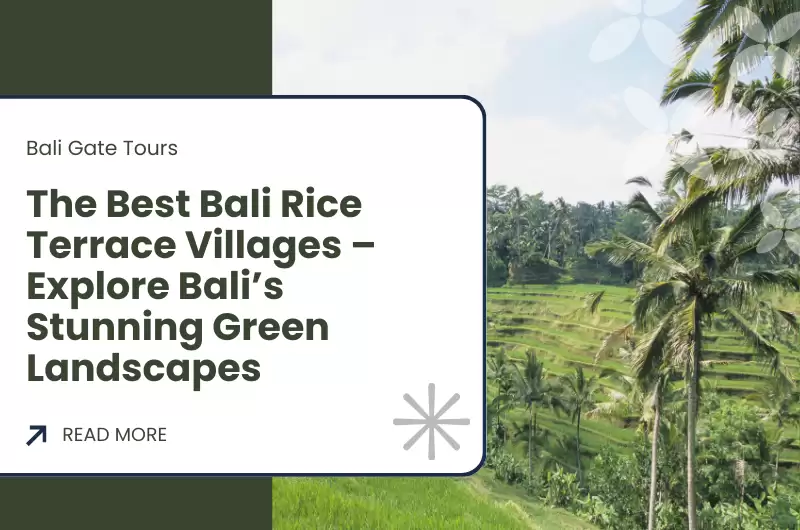
Bali’s rice terraces are among the island’s most iconic landscapes, drawing visitors from around the world who want to experience the lush green beauty and serenity that defines Bali’s rural heart. The island’s agricultural practices are as much a part of its cultural identity as its temples and beaches, and nowhere is this more apparent than in the rice paddies that stretch across Bali’s hillsides.
Known for their breathtaking views, intricate farming techniques, and serene atmosphere, Bali’s rice terraces are a visual feast that captures the island’s connection to nature and tradition. These green landscapes are not just beautiful to look at; they are also the lifeblood of Bali’s farming community, where generations of Balinese farmers have worked the land using ancient methods that have been passed down for centuries.
In this article, we’ll explore Bali’s best rice terrace villages, where you can wander through fields of vibrant green rice, learn about traditional farming practices, and experience the tranquil beauty of Bali’s countryside. From the iconic terraces in Ubud to the remote rice fields in Tegallalang, this guide will help you discover Bali’s agricultural heritage and how it continues to shape the island today.
The Significance of Bali’s Rice Terraces – A Living Tradition
Bali’s rice terraces are not just a scenic attraction; they are a testament to the island’s deeply rooted agricultural and cultural heritage. Rice farming has been central to Bali’s economy and culture for centuries, and the subak system, a cooperative irrigation method used in rice cultivation, was even recognized as a UNESCO World Heritage site in 2012.
The subak system is based on an ancient water management technique that involves farmers working together to control the flow of water to their rice fields. This system is not just about farming; it’s also about community and the spiritual connection to the land. The subak system is closely tied to Bali’s Hindu beliefs, with temples built in the middle of rice fields to honor the water gods and ensure the prosperity of the land.
When you visit Bali’s rice terrace villages, you’re not just seeing an idyllic landscape—you’re experiencing a piece of Bali’s living cultural heritage. The harmonious balance between nature, culture, and spirituality in the rice terraces makes them a unique destination for travelers looking to connect with Bali’s essence.
1. Tegallalang Rice Terraces – The Iconic Beauty of Bali’s Hills

Tegallalang Rice Terraces is one of Bali’s most famous and recognizable spots. Located in the Ubud region, Tegallalang is known for its lush green fields, steep hillsides, and picturesque landscapes that make it an Instagram-worthy location. The terraces here are often visited by tourists from around the world, and for good reason—the views are nothing short of breathtaking.
The Tegallalang rice terraces are a popular spot for photographers, nature lovers, and those seeking a peaceful walk through Bali’s iconic green landscapes. The terraces are carved into the hillsides, creating a series of levels where farmers cultivate rice using traditional subak irrigation methods. These terraces are a symbol of Bali’s agricultural beauty, offering a visual representation of the island’s long history of rice cultivation.
In addition to the scenic beauty, Tegallalang is home to several small cafes, where visitors can enjoy a cup of Balinese coffee while taking in the stunning views of the terraces. The area also offers various walking routes, making it easy to explore the terraces on foot.
Local Tip: If you visit Tegallalang Rice Terraces, try to go early in the morning or later in the afternoon to avoid the midday crowds. You’ll be able to enjoy the peaceful ambiance and the soft glow of the sun.
2. Jatiluwih Rice Terraces – Bali’s UNESCO Heritage Site
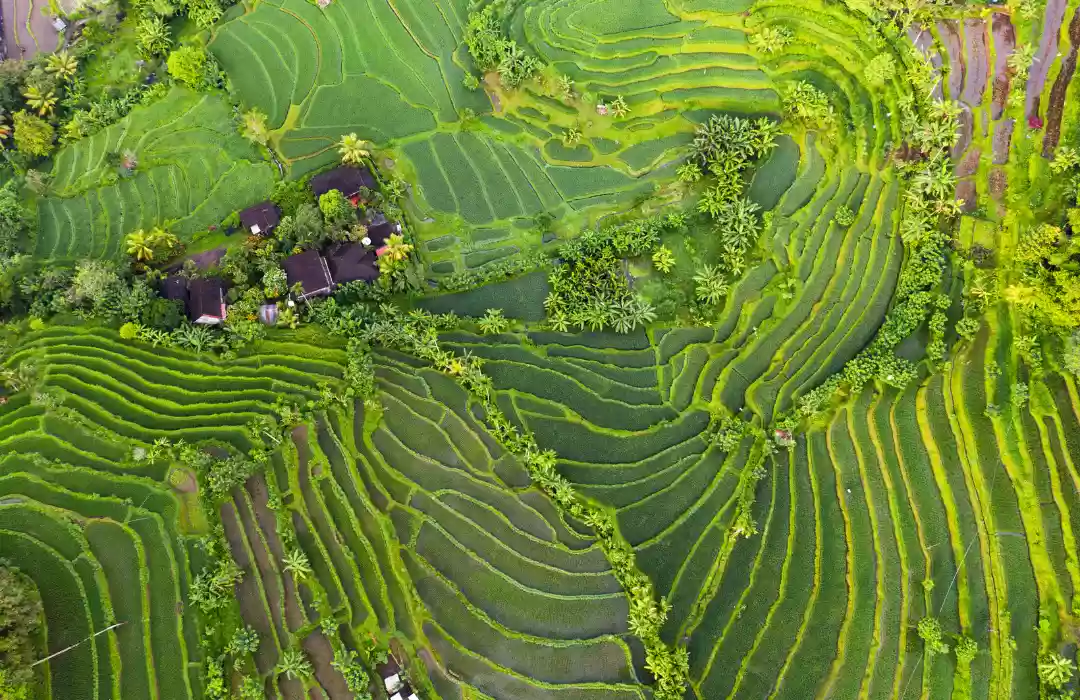
For those seeking a more authentic and peaceful experience away from the crowds, Jatiluwih Rice Terraces is a must-visit. Located in the Tabanan region, Jatiluwih offers breathtaking views of Bali’s green hillsides and expansive rice paddies. Unlike Tegallalang, Jatiluwih is less frequented by tourists, providing a more serene and tranquil environment for those who want to truly immerse themselves in Bali’s agricultural landscape.
Recognized as a UNESCO World Heritage Site, Jatiluwih is considered one of the most important examples of Bali’s subak system. The terraces here are vast, stretching for miles and creating a spectacular patchwork of green fields that seem to roll on forever. The surrounding area is also rich in natural beauty, with towering mountains and lush forests framing the terraces, making it an ideal location for hiking and exploring.
Jatiluwih is also home to several traditional villages where you can witness the age-old farming practices of Bali’s rural community. Many local farmers still work the land using traditional tools and techniques, offering visitors a glimpse into Bali’s agrarian way of life.
Local Tip: Consider taking a guided tour to learn more about the subak system and how it contributes to Bali’s sustainable rice farming practices. The guides can offer valuable insight into the spiritual and cultural significance of the rice terraces.
3. Ceking Rice Terraces – Bali’s Tranquil Gem
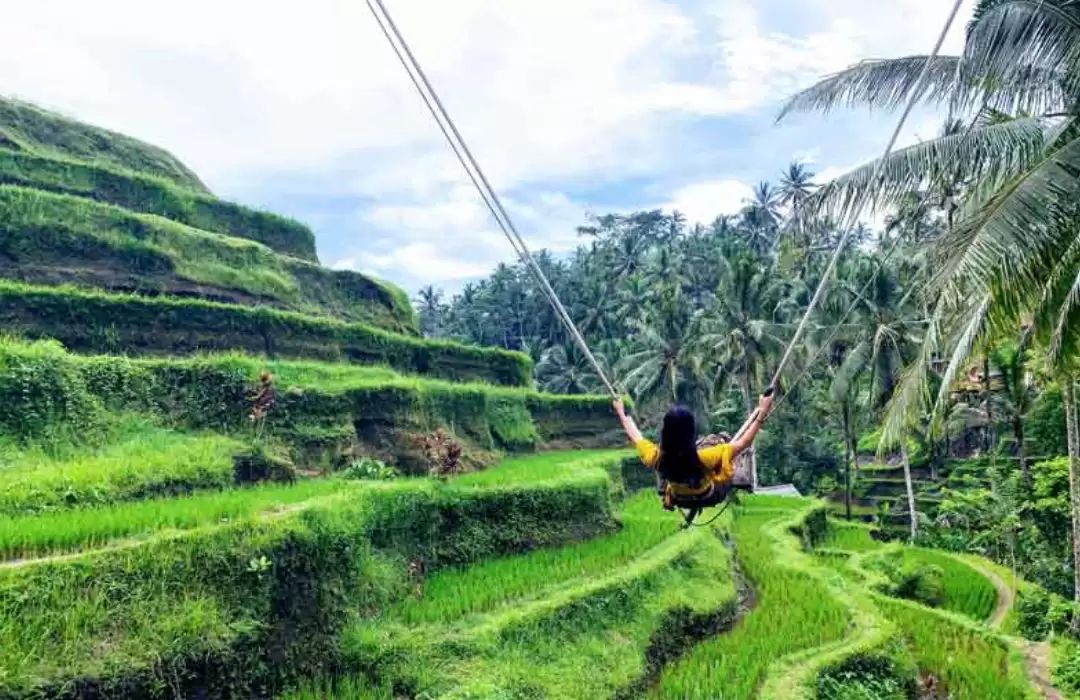
Tucked away in the Ubud region, Ceking Rice Terraces offers a more peaceful alternative to the busier Tegallalang terraces. The terraces here are equally beautiful and are often overlooked by tourists, making it a perfect destination for those seeking solitude amidst Bali’s breathtaking landscapes. The Ceking terraces are smaller but no less captivating, offering a chance to enjoy Bali’s lush green fields without the crowds.
The village of Ceking is home to traditional Balinese farmers who use the subak irrigation system, and visiting this area offers a chance to witness the close relationship between the people and the land. The terraces are set against the backdrop of mountain views and dense jungle, creating a peaceful environment ideal for reflection or quiet walks.
Ceking is also home to a few cafes and warungs where you can enjoy a simple meal or refreshing drink while taking in the beauty of the rice paddies. This village is a wonderful place for visitors to connect with Bali’s agricultural traditions and enjoy its peaceful landscapes.
Local Tip: Ceking Rice Terraces is a fantastic spot for photographers who want to capture Bali’s green landscapes in a more tranquil setting. Arrive early to catch the morning mist and enjoy the serenity before the crowds arrive.
4. Sidemen Village – Bali’s Hidden Gem for Authentic Rice Terrace Experiences
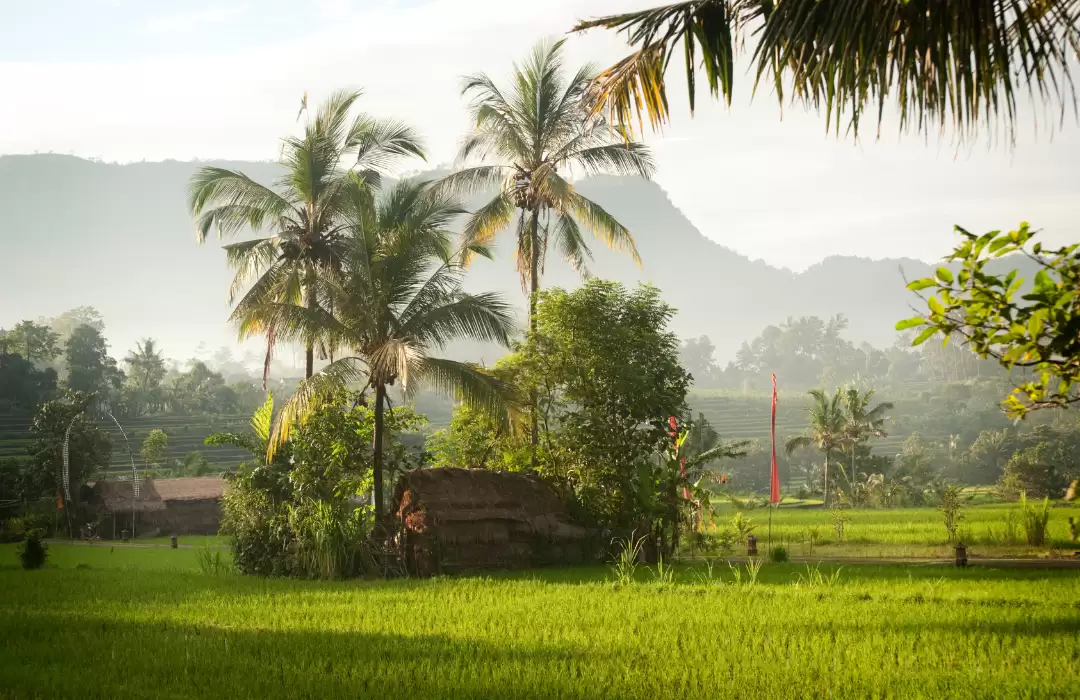
For those seeking an authentic rural experience, Sidemen Village in Karangasem is the perfect destination. Sidemen is a quiet village located in the foothills of Mount Agung, Bali’s sacred mountain. The village is surrounded by beautiful rice terraces, offering stunning views of the mountains and valleys. Unlike the more popular terraces in Ubud, Sidemen remains off the beaten path, making it an excellent choice for travelers looking for a peaceful retreat.
In Sidemen, visitors can explore the traditional rice paddies, walk through the villages, and learn about Bali’s farming culture. The rice terraces here are lush and expansive, with terraces that descend the hillsides and create a layered effect that looks like a piece of art. The view of Mount Agung in the background adds a mystical element to the landscape, making it a photographer’s paradise.
Sidemen is also a great base for trekking, as the area offers numerous hiking trails that allow visitors to explore Bali’s natural beauty in a more intimate way.
Local Tip: Stay in a local homestay in Sidemen to truly immerse yourself in the village’s agricultural life. You’ll have the chance to connect with locals and learn about their daily farming practices.
5. Sukawati Rice Terraces – The Hidden Gem of Gianyar
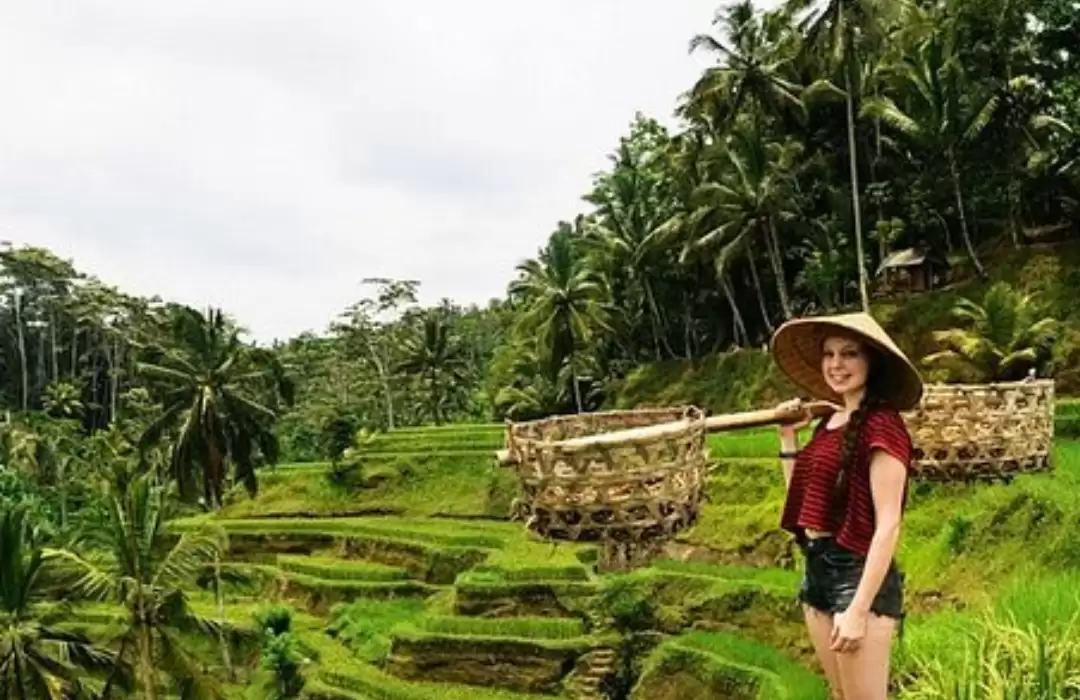
Located in the Gianyar region, Sukawati is home to another of Bali’s hidden rice terraces. Often overlooked by tourists, Sukawati offers a serene and tranquil environment where you can enjoy peaceful walks through the rice fields while soaking in the beauty of Bali’s rural landscapes.
The Sukawati Rice Terraces are well-maintained and offer beautiful views of green fields surrounded by tropical vegetation. This area is less commercialized than other rice terrace regions, making it an excellent destination for those who want to escape the crowds and experience Bali’s agricultural culture at its best. The village of Sukawati is also known for its art galleries and traditional crafts, offering visitors a chance to combine nature walks with a cultural experience.
Local Tip: Explore the Sukawati village after your trek through the rice terraces. You’ll find local markets selling handmade crafts and artwork that reflect Bali’s rich artistic heritage.
Bali’s Rice Terrace Villages – An Immersive Journey into Nature
Bali’s rice terrace villages are more than just picturesque landscapes—they are the heart and soul of the island’s agricultural and cultural heritage. From the iconic Tegallalang terraces to the hidden Sidemen village, each destination offers a unique opportunity to connect with Bali’s traditions and immerse yourself in its green landscapes.
Whether you’re hiking through the lush terraces, learning about the subak system, or simply enjoying the tranquility of the island’s rural beauty, Bali’s rice terraces provide an unforgettable experience. These serene, peaceful villages are the perfect places to escape the crowds, reconnect with nature, and experience Bali in its most authentic form.










